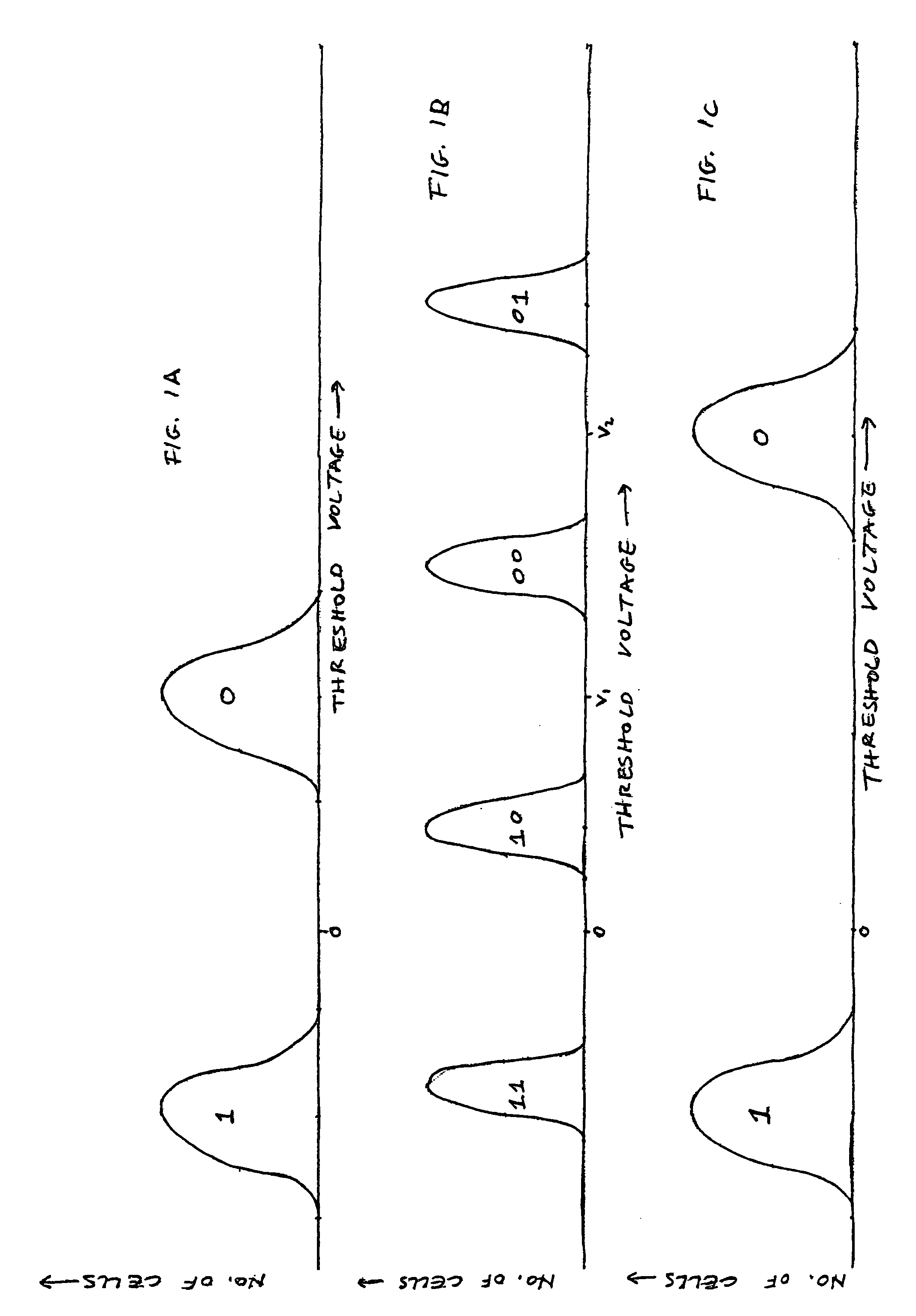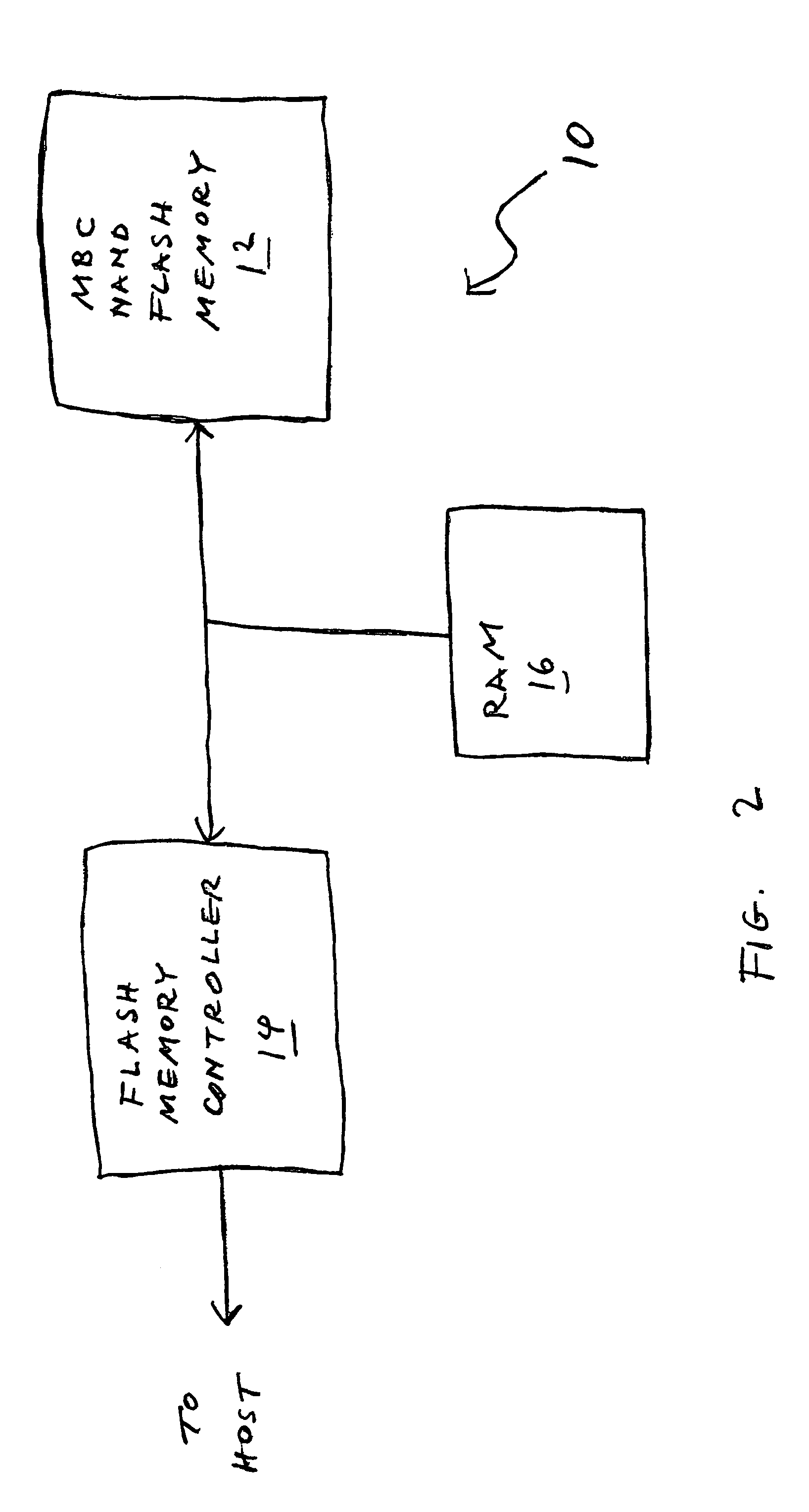Method of managing a multi-bit-cell flash memory
a multi-bit, flash memory technology, applied in the field of flash memory, can solve the problems of lower reliability of mbc than sbc, lower quality specification of mbc cells in terms of data retention time, and lower performan
- Summary
- Abstract
- Description
- Claims
- Application Information
AI Technical Summary
Benefits of technology
Problems solved by technology
Method used
Image
Examples
second embodiment
[0058] The above embodiment of the present invention has been described in terms of distinguishing between two different values of N. A similar second embodiment of the present invention can be used to distinguish among more than two possible values of N.
[0059] Let us assume (as an example) that N is selectable from a group containing exactly three values. This is for example the case when a block of cells can be programmed in one of three modes such as: [0060] a. Each cell storing one bit. [0061] b. Each cell storing two bits. [0062] c. Each cell storing three bits.
first embodiment
[0063] One way of implementing the methods of the present invention for distinguishing between the possible modes is to assign two cells (“C1” and “C2”) per block as flag cells, use only one bit of each flag cell, and define a correspondence between the values of those bits and the possible modes. For example: [0064] i. One bit per cell indicated by cell C1=left unprogrammed, cell C2=left unprogrammed. [0065] ii. Two bits per cell indicated by cell C1=left unprogrammed, cell C2=programmed. [0066] iii. Three bits per cell indicated by cell C1=programmed, cell C2 programmed.
[0067] When attempting to find out the mode with which the block was programmed, we read the flag cells according to the methods of the first embodiment (for example by reading according to the 1-bit programming mode), and then translate the reading from the flag cells into the corresponding mode.
[0068] Although this works, it requires the allocation of at least two cells from each block to act as flag cells. Typ...
PUM
 Login to View More
Login to View More Abstract
Description
Claims
Application Information
 Login to View More
Login to View More - R&D
- Intellectual Property
- Life Sciences
- Materials
- Tech Scout
- Unparalleled Data Quality
- Higher Quality Content
- 60% Fewer Hallucinations
Browse by: Latest US Patents, China's latest patents, Technical Efficacy Thesaurus, Application Domain, Technology Topic, Popular Technical Reports.
© 2025 PatSnap. All rights reserved.Legal|Privacy policy|Modern Slavery Act Transparency Statement|Sitemap|About US| Contact US: help@patsnap.com



